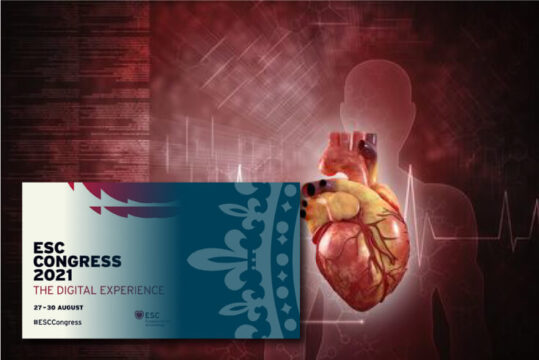In patients hospitalized for COVID-19, both acute and chronic myocardial injury impact survival at 6 months. In addition, the risk does not disappear after the acute phase of the disease, instead it persists in the following months among those who survive.

This study was presented at the scientific sessions of ESC 2021 and was simultaneously published in the European Heart Journal – Quality of Care & Clinical Outcomes.
The type of myocardial injury was based on troponin level assessment between 48 and 72 hours of diagnose using the Fourth Universal Definition of Myocardial Infarction criteria.
We are used to monitoring troponin levels in hospitalized patients regardless COVID-19, since it has shown prognostic value in critical patients. There is plenty of data in the literature to support this. What we were missing was a systematic assessment of the different elevation patterns on a large-scale study.
This study identified 7,815 patients admitted to a large center in New York between February and October 2020. They had all been diagnosed with COVID-19. Troponin analysis was available in 4,695 cases (60%).
Myocardial injury was considered chronic when troponin was elevated on both first and subsequent assessments with ≤20% variation and was considered acute if markers resulted normal on first assessment and subsequently elevated with >50% variation, or cardiac troponin was elevated on both first and subsequent assessments with >20% variation.
Read also: ESC 2021 | GREENNESS: Surprising New Protective Factor against Cardiovascular Disease.
Based on these definitions, 6.8% of the population showed chronic myocardial injury, which was associated to more kidney and cardiac failure.
On the other hand, nearly 25% of the population showed acute myocardial injury values, which was associated to tachypnoea, hypotension, lower O2 saturation and higher levels of inflammation markers.
Global mortality rate was 23.6%.
When we observe figures after 6 months, in patients with normal troponin levels mortality drops by almost half (13%). This is driven by a 43% rate between those presenting chromic myocardial injury (HR 4.17; CI 95% 3.44 to 5.06) and 47.3% of patients evolving with acute myocardial injury (HR 4.72; CI 95% 4.15 to 5.36).
Read also: ESC 2021 | STEP: Blood Pressure Values in the Elderly, A Never-Ending Debate.
After excluding the first 30 days, when events peak, risk of death was still significant after 6 months.
This was true for both types of myocardial injury, with approximately three times higher mortality in the group with normal troponin levels.
These study outcomes are of vital importance to cardiologists seeing as they will be in charge of monitoring these patients closely after discharge.
Despite the limitations of being an observational retrospective study (with the consequent risk of overestimating the prevalence of myocardial injury) this is, for now, one of the best studies we have on the matter.
esc2021types-of-myocardial-injury-and-mid-term-outcomes-in patients-with-COVID-19Original Title: Types of myocardial injury and mid-term outcomes in patients with COVID-19.
Reference: Annapoorna Kini et al. Eur Heart J Qual Care Clin Outcomes. 2021 Aug 30;qcab053. Online ahead of print. doi: 10.1093/ehjqcco/qcab053.
Subscribe to our weekly newsletter
Get the latest scientific articles on interventional cardiology





